的, 得 & 地: Three characters, three meanings, one tone
If you’re still riding the Pinyin wave, the Chinese ‘de’ particles are pretty difficult to learn as they all have the same 5th ‘neutral’ tone.
Once upon a time, my method was to stick a ‘de’ in every sentence just in case it was necessary (not the right way to go about it, that’s for sure!). And for a long time, I assumed they were all the same character. Finding out otherwise was a surprise, but just another leg of my journey to conquering the Chinese language!
The three Chinese ‘de’ particles work as ‘connectors’ between other characters or clauses. As with many Chinese characters, all three of these characters have other meanings and tones.
Click the links below to see more details about these characters:
的 (de) is used after an attribute, or to indicate possession.
地 (de) is used after a verb to modify the adjective.
得 (de) is used before a complement.
Here are some examples of the three ‘de’ particles in use:
美丽的花朵。 (měi lì de huā duǒ) beautiful flowers.

In this case, 美丽 (měi lì) ‘beautiful’ is the attribute or feature of the 花朵 (huā duǒ) flowers.
认真地阅读。(rèn zhēn de yuè dú) read carefully.

Here, 地 (de) turns the adjective 认真 (rèn zhēn) into the adverb ‘carefully’.
干得不错。(gàn de bù cuò) well done.

The 得 (de) is used here to preface the complement ‘不错‘ (bù cuò).
Below is a more detailed explanation of how to use each of the three Chinese ‘de’ particles:
的 (de)
1. One of the ways that 的 (de) is used is to mark a feature or quality of a noun known as an attributive. It often connects an adjective with a noun.
Sentence pattern: adj + 的 + noun
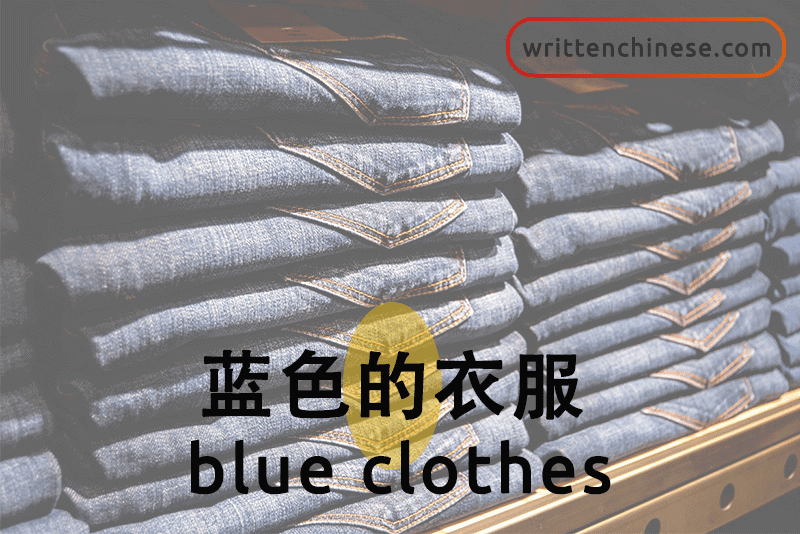
蓝色的衣服。 (lán sè de yī fu) blue clothes (the clothes are blue)
adj + 的 + noun
他是一个很优秀的作家。 (tā shì yī gè hěn yōu xiù de zuò jiā.) He is an excellent writer.
adj + 的 + noun
2. 的 (de) is also used as a possessive particle or to be ‘of’ something.
Sentence pattern: noun + 的
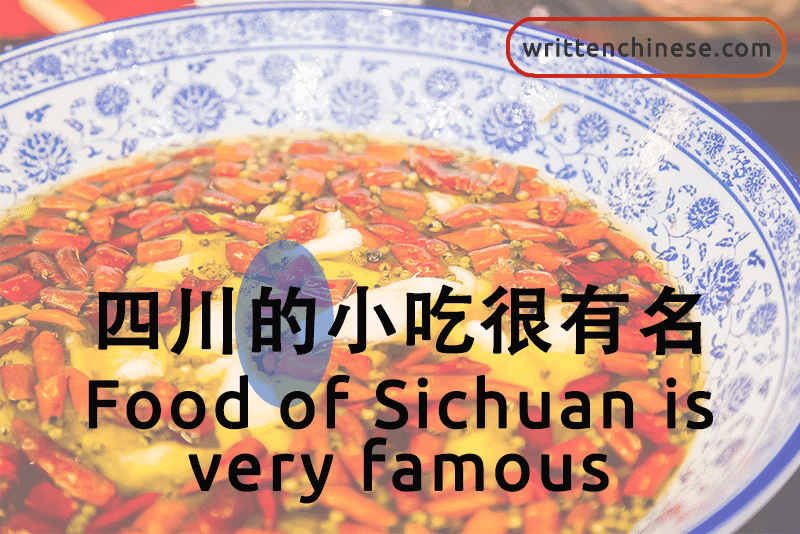
四川的小吃很有名。 (sì chuān de xiǎo chī hěn yǒu míng.) Food of Sichuan is very famous.
noun + 的 + subject
Imagine that in this instance, 的 can be used in the same way that an apostrophe is in English ( ‘s): Sichuan’s food is very famous.
You can also see the 的 character in relation to possessive pronouns:
For example:
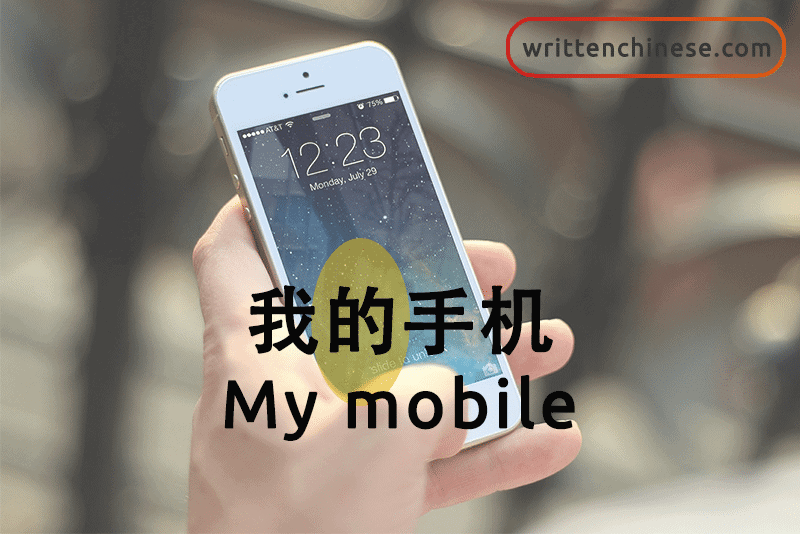
我的手机。 (wǒ de shǒu jī) My mobile.
他的杯子。 (tā de bēi zi) His cup.
Here are some more advanced rules regarding the 的 (de) Chinese particle:
的 (de) With An Adjective
1. When the adjective is monosyllabic, there’s no need to add the Chinese particle, 的 (de).
高山 (gāo shān) high mountain
小船 (xiǎo chuán) small boat
If 的 (de) is added, it is to emphasize the adjective.
好的音乐 (hǎo de yīn yuè) nice music

旧的书店 (jiù de shū diàn) old bookstore
2. When the adjective is disyllabic, 的 (de) should almost always be added, especially when the adjective is used to describe a state.

炙热的阳光 (zhì rè de yáng guāng) burning sunshine
宁静的夜晚 (níng jìng de yè wǎn) quiet night
的 (de) With A Noun
When the attribute is a noun, we almost always need to add 的 (de).
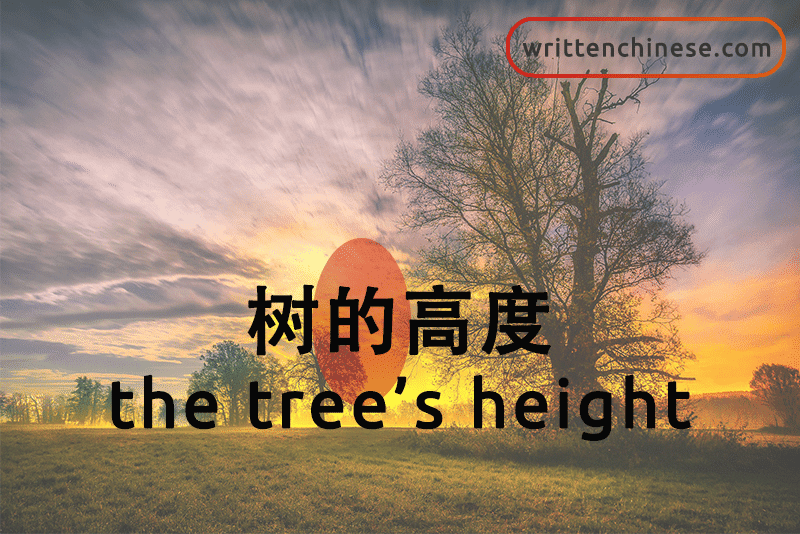
树的高度 (shù de gāo dù) the tree’s height
甜蜜的吻 (tián mì de wěn) sweet kiss
马尔代夫的海 (mǎ ěr dài fū de hǎi) the sea of Maldives
There are some exceptions, for example:
1. When the noun-noun attribute phrase is a name of something or a title, there’s no need to add 的 (de).
牛肉 (niú ròu) beef
爵士乐 (jué shì yuè) jazz
2. When a noun phrase is used to indicate a state of subordination, 的 (de) should be used. However, when the noun phrase is used to indicate property, 的 (de) can sometimes be removed.
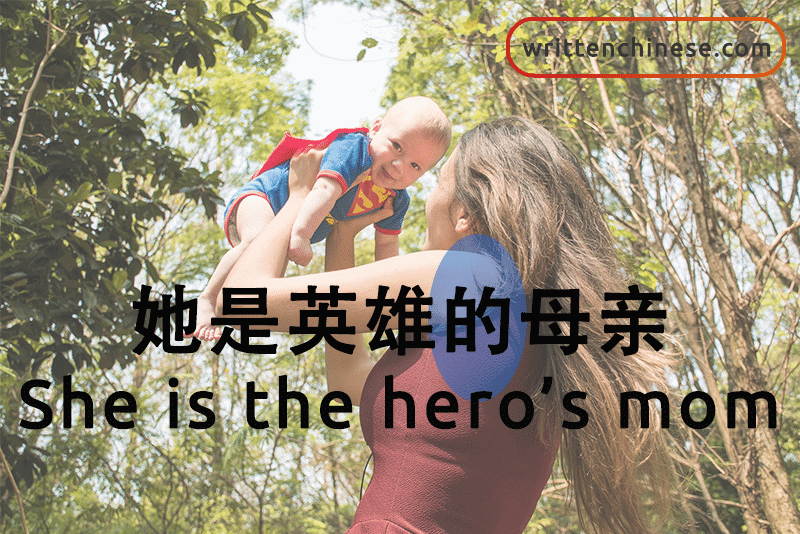
她是英雄的母亲。(tā shì yīng xióng de mǔ qīn) She is the hero‘s mom.
她有个英雄母亲。(tā yǒu gè yīng xióng mǔ qīn) She has a heroic mom.
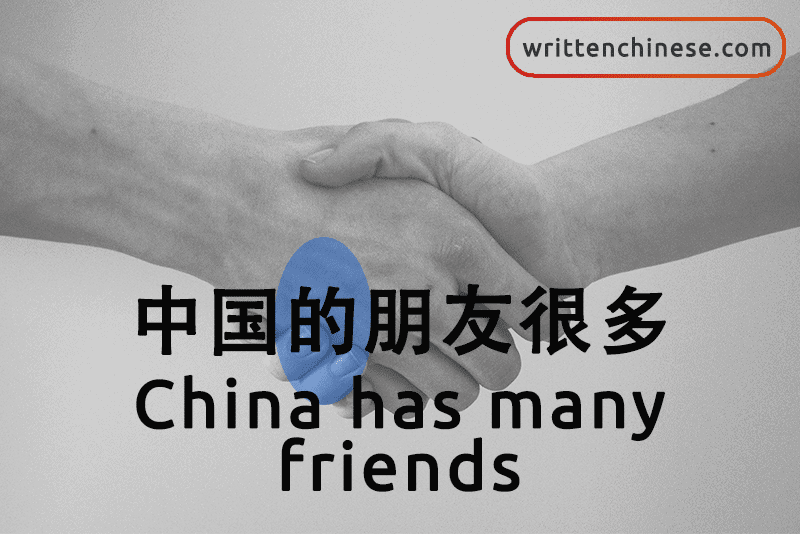
中国的朋友很多。(zhōng guó de péng you hěn duō) China has many friends.
他有一个中国朋友。(tā yǒu yī gè zhōng guó péng you) He has a Chinese friend.
的 (de) With a Pronoun
When the attribute is a pronoun, we usually need to add 的 (de).
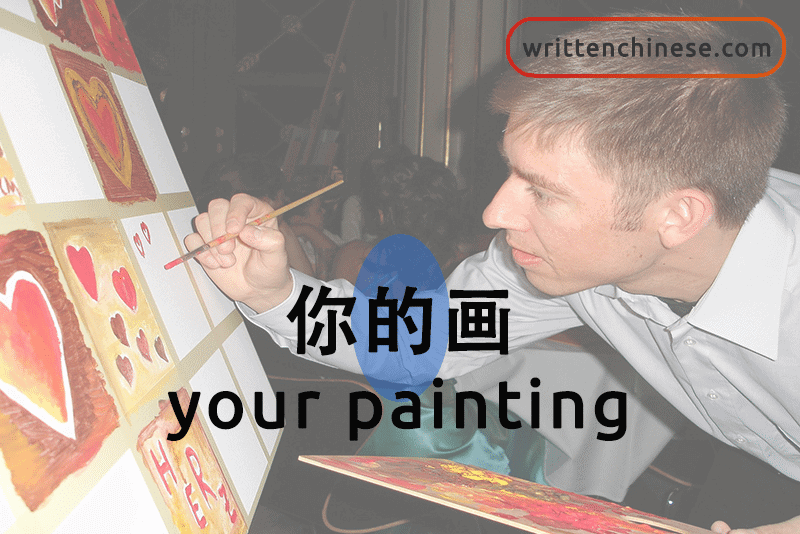
你的画 (nǐ de huà) your painting
我的爷爷 (wǒ de yé ye) my grandfather
他的房间 (tā de fáng jiān) his room
这是谁的钥匙?(zhè shì shéi de yào shi) whose key is this?
There are some examples when 的 (de) doesn’t need to be included:
1. When the pronoun attribute phrase is included in a longer sentence, 的 (de) doesn’t always have to included.
她的房间 → 我去了她房间。(tā de fáng jiān → wǒ qù le tā fáng jiān) I went to her room.
我的眼睛 → 我眼睛疼。(wǒ de yǎn jing → wǒ yǎn jing téng) My eyes hurt.
2. If the object is a country, group or company, 的 (de) doesn’t have to be included.
我们国家 (wǒ men guó jiā) our country
你们公司 (nǐ men gōng sī) your company
3. When the object is a relationship title or is monosyllabic, then 的 (de) can be removed from the sentence.
她妹妹很可爱。(tā mèi mei hěn kě ài) Her younger sister is very cute.
我弟被我妈揍了一顿。(wǒ dì bèi wǒ mā zòu le yī dùn) My brother was beaten up by my mom.
的 (de) With a Verb
1. When the verb-noun attributive phrase is a name of something or a title, there’s no need to add 的 (de).
烤鸭 (kǎo yā) roast duck
压缩文件 (yā suō wén jiàn) compressed files
使用说明 (shǐ yòng shuō míng) instructions (for use)
2. In some situations, without 的 (de), the phrase will become a verb-object phrase. To avoid the change in meaning, we must add 的 (de).
写字 (xiě zì) to write
写的字 (xiě de zì) writing
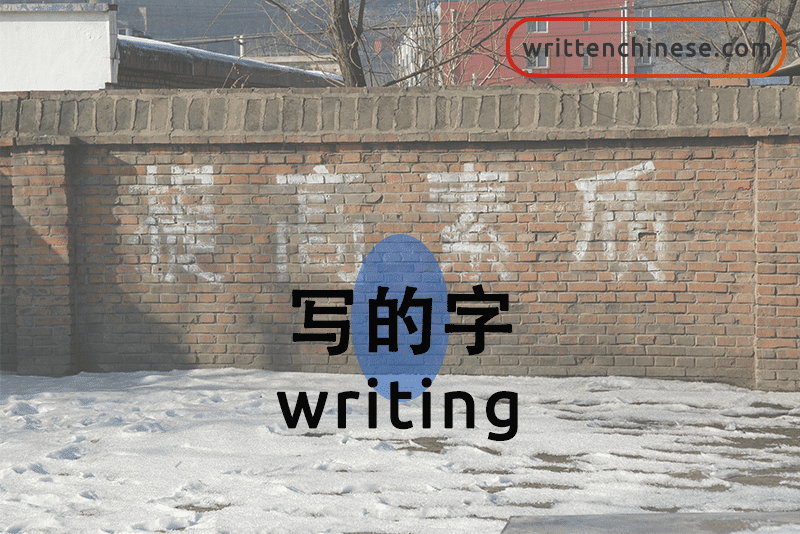
她唱歌很好听。(tā chàng gē hěn hǎo tīng) She sings well.
她唱的歌很好听。 (tā chàng de gē hěn hǎo tīng) She sang the song well.

的 (de) in a Short Phrase
When the attribute is a short phrase, we need to add 的 (de).
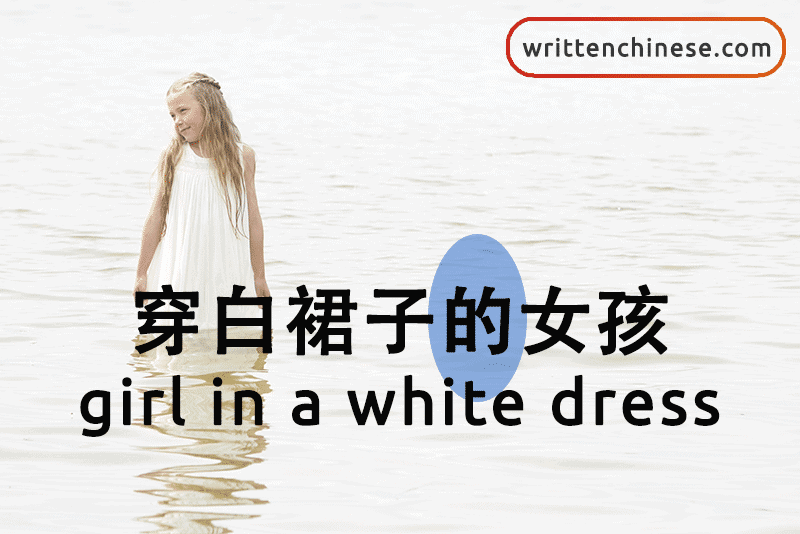
穿白裙子的女孩 (chuān bái qún zi de nǚ hái) girl in a white dress
有才华的少年 (yǒu cái huá de shào nián) talented boy
地 (de)
This ‘de’ particle is known as the adverbial, meaning it changes an adjective into an adverb. You can think of it as most often being the equivalent of ‘-ly’ in English.
Sentence pattern: adv + 地 + adj / verb

她伤心地离开了学校。(tā shāng xīn de lí kāi le xué xiào.) She sadly left school.
adv + 地 + verb

天渐渐地冷起来了。(tiān jiàn jiàn de lěng qǐ lai le.) The days are gradually getting colder.
time adv + 地 + adj
地 is also a character meaning ground or earth and has the Pinyin dì. You can see that on the left side, the radical 土 can be seen. 地 (dì), is used in words such as 地方 (dì fang) = place and 地铁 (dì tiě) = metro)
得 (de)
The final ‘de’ is commonly used to mark a complement. A complement is a word that follows a verb to make a sentence complete.
Sentence pattern: adj / verb + 得

今天我们聊得很开心。(jīn tiān wǒ men liáo de hěn kāi xīn.) Today we chatted happily.
verb + 得 + complement

这几天热得很。(zhè jǐ tiān rè de hěn) The past few days have been very hot.
adj + 得 + complement
If you want to see more example sentences and explanations for the particles 的, 地 and 得, visit our Online Dictionary.
